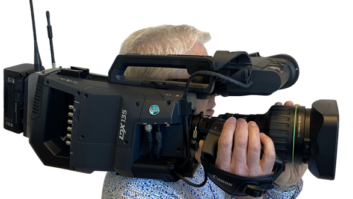
The broadcast and production industries are under increasing pressure. Audiences are more demanding, and content needs to be produced faster to get to market more quickly to continue driving ROI. Ooyala and the Digital Production Partnership (DPP) recently brought together key industry leaders to discuss the new complexities due to the industry’s rapid evolution and, to understand how companies are responding.
Their response? Faster content production, management and delivery is the underlying plea to help solve many of the changes in the industry. Audiences have grown used to getting fresh content when and how they want, and in particular internet delivery has amplified developments for production teams. The industry needs to recalibrate itself and focus on developing agility and responsiveness.
What does all of this mean for the industry? Fundamentally there needs to be a new, integrated approach to content creation, delivery and monetisation within the broadcast industry. Speed is of the essence. Every sector has been affected by huge volumes of data, but the content industry needs to harness this particularly in the production chain to build a video business that meets the demands today and adapts to the demands tomorrow.
Data is king, still!
Big data has been driving change in every aspect of our economy, at least in the conversations the industry is having, even if this hasn’t translated through to actual change yet. If the industry is to react and meet new challenges of speed, collection, analysis and application of data to drive media production and delivery needs to be second nature. One industry leader told us that everyone is becoming a data scientist. The industry is recognising how data can provide insight into audiences and content, what content drives the greatest return?, what content works?, how do viewers watch some content differently than others?, are all questions that data can answer. Understanding this is vital to reacting quickly to the competition, identifying where the real value in a video business lies and how to meet shifting audience demands.
At the roundtable, one leader pointed out the strong position the industry is already in when it comes to data. The data the broadcast industry has is in good shape – it’s generally well-structured, organised and accessible. The problem is applying it in an environment of fragmentation and legacy systems. Data needs to flow throughout the entire process, and structural problems are making this challenging for broadcasters. Without an integrated approach, it’s hard to get data in different systems talking to each other fast enough to beat competitors, keep pace with consumer attention and see the big picture.
On the other hand, broadcasters can’t become so blinded by the lure of big data that they lose sight of the bottom line. Ultimately, the data in their system needs to be used. Broadcasters need to understand commercial decisions that will inevitably help them retain and grow audiences. This means combined data sets which can inform what content to create and the strategy to take.
Use data and it can be the rocket fuel which turns content offerings from acceptable to exceptional. The participants all agreed that content providers must understand their video performance, to use it to plan future content production decisions and increase revenues. The takeaway is: If you don’t, your competitors will. Whether they’re broadcasters or someone with a smartphone who can reach seven billion people at the push of a button.
Broadcast is strong but needs to adapt
Given the importance of speed to reaching audiences, and data to power that speed, we’re talking about the future of the media industry itself. After all, with more producers and distribution platforms some broadcasters could consider themselves in a precarious position. In fact, the broadcast industry has significant strengths to build on. Industry executives at the roundtable identified key strengths that modern content providers must have: a solid grounding and understanding of the right business model and audiences, and an unquestionable expertise in content. Audiences still look to the established broadcasters to help sift through an ever-expanding library of content and find something they want to watch.
New technology is the enabler which can take this to the next level. Automation, as in many industries, can pick up much of the slack in the current media production and distribution supply chain. For example, our own Ooyala Flex has reduced some project delivery times by more than 85 per cent.
Ultimately producers can’t rest on their laurels. Many of those at the event felt that whatever the eventual outcome, we’re in for a turbulent few years – “one year of revenue doesn’t make a trend.”
Demand and supply
Years ago, broadcasters offered new content when they were ready to. There were well known rules around what content performed best at which times and on which days.
These rules have been well and truly re-written.
Broadcasters are facing a tough market – demand, often unpredictable, from consumers, and supply side pressures on producers. Data must be used to understand this constantly shifting market and then act on it, and with more content than ever it’s possibly the only way to understand what is happening.
The challenge to broadcasters is increasing delivery speed to keep the industry moving forwards.
By Phil Eade, director and product evangelist, media logistics, Ooyala







